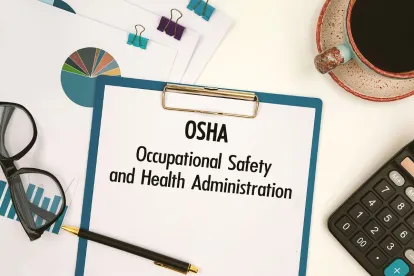The Occupational Safety and Health Administration (OSHA) has announced two enforcement guidance changes with the goal of deterring violations by substantially increasing the penalties certain employers may face for alleged violations.
OSHA released this guidance with a rhetorical flourish about employers allegedly putting “profit over safety.” The ultimate objective, as articulated in OSHA’s January 26, 2023, press release, is to “make [OSHA’s] penalties more effective.” OSHA will seek to do just that by issuing more citations (each one carrying separate penalty amounts) during a single inspection.
The enforcement guidance changes go into effect on March 27, 2023.
Employer Takeaways
The new field guidance on increased citations and penalties will undoubtedly result in:
-
Greater number of serious citations
-
Greater penalties (and OSHA’s penalties just increased for inflation)
-
More employers landing on OSHA’s severe violator list, which will lead to even more oversight from the agency
Instance-By-Instance Citations
Currently, OSHA allows for instance-by-instance citations (IBI) for willful violations.
Under the first enforcement guidance change, starting on March 27, 2023, OSHA regional administrators and area office directors will have greater discretion to cite specific types of OSHA violations as IBI citations. This, in turn, will multiply the penalties issued. The specific violations are “high-gravity” serious violations of OSHA standards specific to certain conditions and violations where the language of the corresponding rule supports a citation for each instance of non-compliance. These conditions include hazards related to falls, trenching, machine guarding, respiratory protection, permit required confined spaces, lockout tagout, and other-than-serious violations of OSHA standards specific to recordkeeping. The new guidance covers enforcement activity in general industry, agriculture, maritime, and construction industries. In 2021, fall protection, respiratory protection, lockout tagout, and machine guarding were among OSHA’s Top 10 Most Frequently Cited Standards.
OSHA states that the “change is intended to ensure OSHA personnel are applying the full authority of the Occupational Safety and Health Act where increased citations are needed to discourage non-compliance.” Under this guidance, the decision to use IBI citations “should normally be” based on at least one of these factors:
-
The employer has received a willful, repeat, or “failure to abate” violation within the past five years where that classification is current.
-
The employer has failed to report a fatality, inpatient hospitalization, amputation, or loss of an eye pursuant to the requirements of 29 CFR 1904.39.
-
The proposed citations are related to a fatality or catastrophe.
-
The proposed recordkeeping citations are related to injury or illness(es) that occurred as a result of a serious hazard.
The agency states that IBI citations may be used when the text of the relevant standard allows (such as per employee violations) and when the instances of violation cannot be abated by a single method of abatement.
Grouping Violations
Under the second guidance change, OSHA reminds its regional administrators and area directors of their authority not to group violations, but, instead cite them separately to more effectively encourage employers to comply with the intent of the Occupational Safety and Health Act. Like the first guidance change, this one also may result in an uptick in the number of citations OSHA issues following an investigation and likely will lead to increased penalties for employers.
OSHA states that grouping violations should be considered when:
-
Two or more serious or other-than-serious violations constitute a single hazardous condition that is overall classified by the most serious item;
-
Grouping two or more other-than-serious violations considered together create a substantial probability of death or serious physical harm; or
-
Grouping two or more other-than-serious violations results in a high gravity other-than serious violation.
OSHA says that regional administrators and area directors should not group violations if the evidence allows for separate citations in cases in which grouping does not elevate the gravity or classification and resulting penalty. In situations where an existing directive encourages grouping, regional administrators and area directors may use discretion to cite separately, the guidance states. These situations include, but are not limited to, cases in which violations have differing abatement methods; each violative condition may result in death or serious physical harm; and each violative condition exposes workers to a related but different hazard.
Assistant Secretary for Occupational Safety and Health Doug Parker explained OSHA’s rationale behind the guidance: “Smart, impactful enforcement means using all the tools available to us when an employer ‘doesn’t get it’ and will respond to only additional deterrence in the form of increased citations and penalties.” He continued, “[T]his is intended to be a targeted strategy for those employers who repeatedly choose to put profits before their employees’ safety, health and wellbeing. Employers who callously view injured or sickened workers simply as a cost of doing business will face more serious consequences.”
OSHA penalties have long been criticized by some advocacy groups and members of Congress as insufficient. The latest OSHA enforcement guidance can be viewed as an attempt by the agency to respond to that criticism.






 />i
/>i

